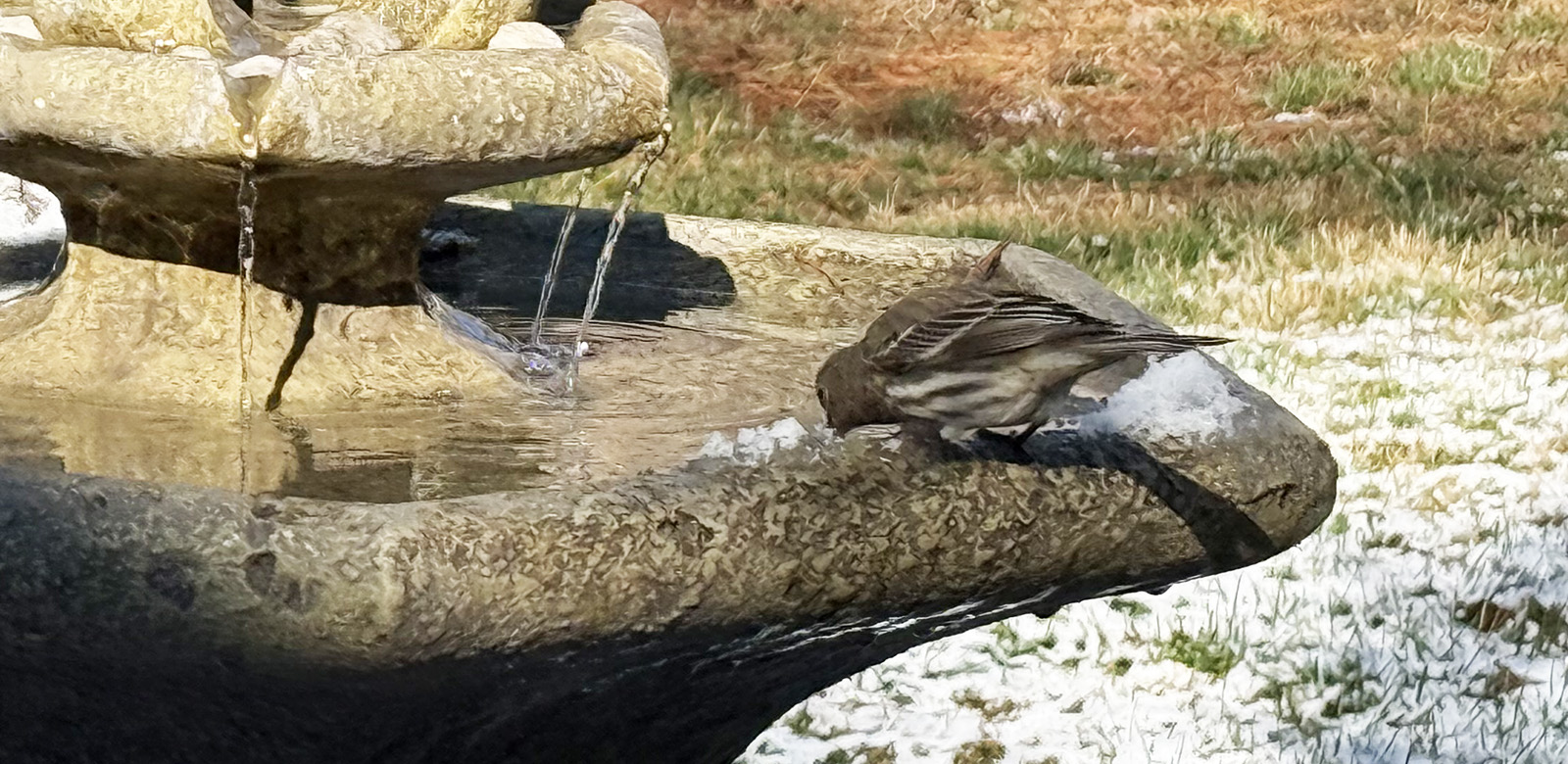
Don’t Forget the Water for Birds!
By Stephen Living/DWR
Photos by Stephen Living/DWR
During the cold weather, many people ensure that their bird feeders are topped off to help their feathered friends endure the cold. Providing high-quality, energy-rich food sources during winter can be be welcome addition for birds (be sure to check out DWR’s safe bird feeding guidance.).
But there’s another important habitat resource that can become very limited during cold snaps—water. This might seem a little counter-intuitive… after all, after a big snowstorm there are piles of frozen water just laying around. Until it melts, though, snow or ice doesn’t do wildlife any good if they’re thirsty. A source of liquid water in a frigid world can be a great way to help the birds around your home.

So how do you provide water when it’s so cold? The key is to keep the water source from freezing. Choose a bird bath that is made of materials like plastic or resin that won’t crack. Place your bird bath somewhere where it gets sunlight, but is protected from the wind. A darker-colored bird bath will absorb heat from the sun, which can help keep it from freezing as well. You can add dark-colored pebbles to the bottom if yours is light colored. Fill your bird bath up as much as you can, because smaller volumes of water freeze more quickly.
Water that circulates can help prevent freezing, as long as it’s not bitterly cold. A bird bath or fountain with moving water can help your thirsty birds find a place to sip. Be careful not to let pumps freeze, though, as it can damage them.
Many manufacturers make heated bird baths that prevent water from freezing. You can also use a variety of deicers that can be submerged in your existing bird bath and will prevent freezing. The goal here isn’t to create a hot-water spa for the birds, but to keep the water just warm enough to remain liquid. As these are electric, be sure to follow the manufacturer’s installation instructions.

While you sit back to watch the birds enjoy the water you’ve provided, put on a kettle and make a cup of tea or hot chocolate for your own winter beverage!
Stephen Living, the DWR habitat education coordinator, is a biologist and naturalist with a lifelong love of wildlife and nature that began in the woods and streams of his childhood.
Distribution channels:
Legal Disclaimer:
EIN Presswire provides this news content "as is" without warranty of any kind. We do not accept any responsibility or liability for the accuracy, content, images, videos, licenses, completeness, legality, or reliability of the information contained in this article. If you have any complaints or copyright issues related to this article, kindly contact the author above.
Submit your press release